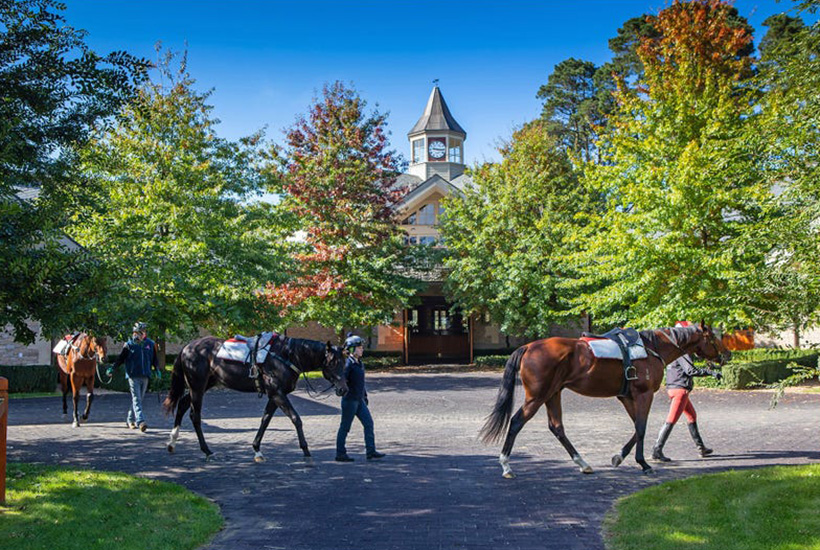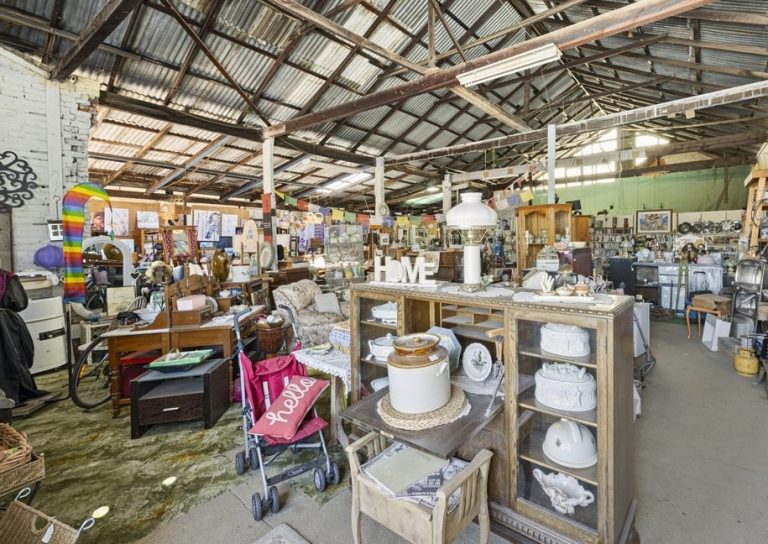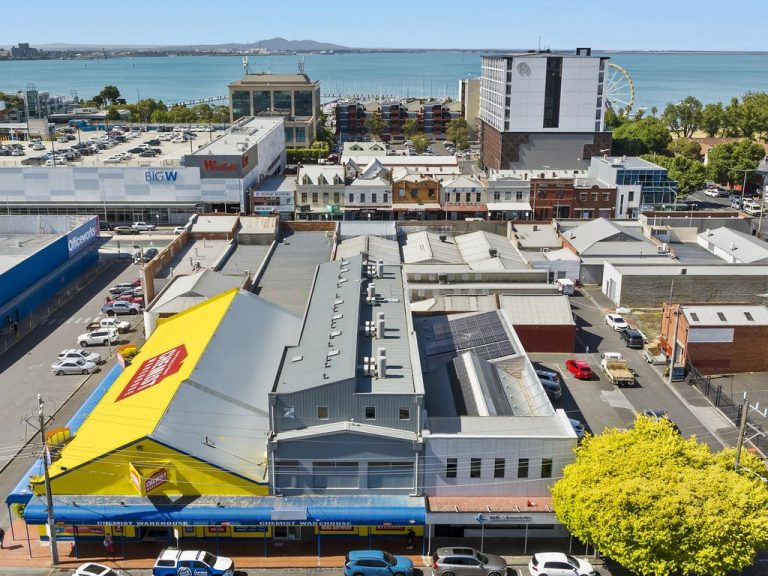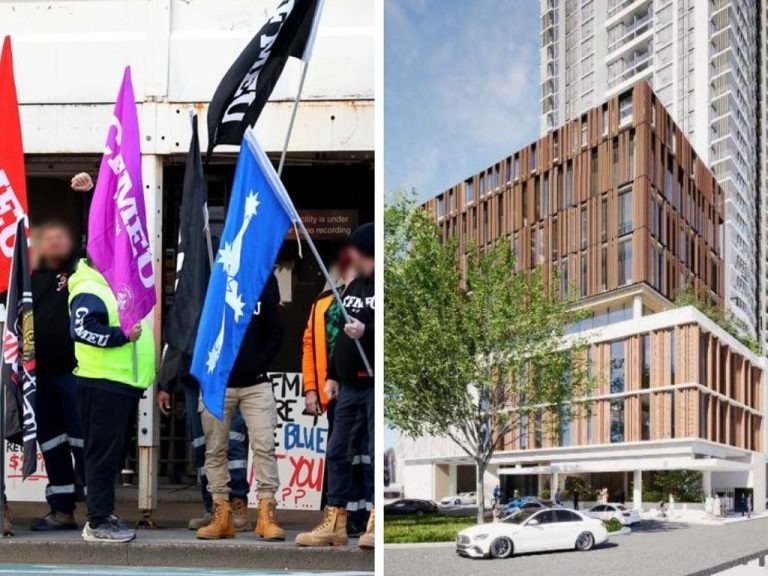Equine properties: Great places for horsing around

When seven-time Melbourne Cup winner Lloyd Williams pulled his famed Macedon training facility off the market in February 2020, blaming COVID-19, it raised the spectre of dark days ahead for the thoroughbred industry.
But fifteen months on, all evidence points to the resilience of the Australian equine industry, which contributes $5 billion a year to the economy, according to AgriFutures Australia.
Racing events continued around the country during the pandemic, thanks to racing authorities enforcing strict bio-security protocols and state governments granting exemptions. This protected jobs in the 65,000-strong workforce.
Punters contributed to a $221.6 million record betting spree at the 2020 Melbourne Cup according to Racing Victoria – up 17% on the previous year – despite not being able to attend live race meets.
And rural equine properties were caught up in a property boom that saw regional property values increase by 7.9%, more than four times the rate of capital city property values in 2020, according to CoreLogic.
Sam Triggs, a rural property sales manager with Inglis Property, has seen first-hand the impact of increased migration to regional areas. Late last month he sold five 100-acre blocks for an average of $1.3 million in the same Southern Highlands region that achieved $950,000 for similar blocks nine months ago.
“The Southern Highlands has been a popular rural lifestyle market for a long time, for people seeking weekenders out of Sydney, or their ideal rural escape, but what you are seeing now is a cluster of thoroughbred horse people in that region as well, because it is very good agricultural land and it’s close to get to,” Mr Triggs told realcommerical.com.au.
In addition to rising rural property prices, the value of thoroughbred horses was skyrocketing, said Mr Triggs, whose company Inglis sells both property and livestock.
“The Australian thoroughbred industry is very robust, there is a lot of depth there from domestic buyers as well as international buyers, COVID has affected some of the international buyers being able to get in, but the Australian domestic market has taken up the slack and they have been very competitive in competing for Australian bloodstock, because in our industry the prize money is very good, we’re producing globally very competitive horses and it’s very popular, “ Mr Trigg explained.

Experts say the average commercial equine property buyer is looking to spend between $900,000 and $3 million. Picture: realcommercial.com.au/for-sale
The way the equine industry galloped ahead when other industries stalled, is no surprise to Emma Morel, the director of equine management at Australian agricultural institution Marcus Oldham College.
“In COVID, racing was one thing that didn’t stop. It’s such a big and important employer and delivers huge economic benefit, especially in Victoria and New South Wales, the major racing states,” Ms Morel said.
“Even in the sport horse industry we were lucky with (equestrian) competitions continuing. And the minute lockdown ended, people just wanted to be with their horses. Spend time with them, have lessons and you know put money into the industry that spins it around.”
Ms Morel acknowledged commercial equine properties, from thoroughbred training and breeding to equestrian and equine therapy centres, can be “very profitable” but warned they often require “significant investment.”
She said one of the keys to running a successful equine business is having the right property.
“The average buyer is looking at properties between $900,000 and $3 million,” she said.
“There are some good properties on the market between ten and 30 acres that you could make a good business out of.
“The rule of thumb is a ratio of one acre per horse. But you also have to have the right infrastructure – good stabling complexes, good fencing so the horses don’t get injured, good irrigation, and when you are growing young horses, you need good pasture and well-maintained land,” she said.
The old real estate adage “location, location, location,” applies equally to equine properties as it does to commercial or residential real estate.
Ms Morel said a well-located equine property would have fertile soil and pasture that could provide “nutrition as nature intended”, minimising the need to add feed. It would also have dust-free roads to protect young horses from bacterial infections, and be accessible for clients who want to visit the horses.
“Buying a property that has all these things will save you money in the end,” she explained.
Adelaide-based equine property architect and accomplished equestrian Luke Jones adds a surprising ingredient to his list of equine property “must-haves”.
“A beautiful view can be extraordinarily valuable to a thoroughbred horse property,” he told realcommercial.com.au.
“When I’m doing an indoor arena, if there can be an open side with an aspect to a view, it brings a little bit of joy that wouldn’t otherwise be there in that space. And it’s the same with your stable buildings.
“I’m working on a couple of projects at the moment, that are really difficult – undulating where we want big flat space – but the end result is going to be just spectacular as a result of tricky landforms and amazing views that kind of come out of the buildings.”
Mr Jones’ C4 Architects has delivered projects from a $500,000 stable complex to a $20 million thoroughbred horse facility. He advises people considering setting up a commercial equine business to buy a property that has some basic horse facilities already on site, rather than starting with a blank canvas.
“It means they can start running a business straightaway and then develop the property progressively while they are running the business and earning some income” he said, adding that the basics requirements were an arena, fencing, stables and a shed that could be converted for some other use.
Mr Jones said the better a property replicates a horse’s natural environment, the happier and healthier they will be. To this end stables require daylight and ventilation and a visual aspect for the horses.
“Horses are fundamentally herd, social animals. So as far as I’m concerned, they should always be able to see other horses. There are some stables that have solid walls between them, particularly in racing stable or stables where they are being prevented from interacting, but generally, they’re happier when they can see and smell and interact with other horses,” he said.
Stunning equine properties on the market
The need for fertile soil and lush, expansive pastures mean horse properties are located in some of the most beautiful parts of Australia.
Here are four stunning equine properties on the market.
Bong Bong Farm, Moss Vale, NSW

Bong Bong Farm has impressive equine facilities. Picture: realcommercial.com.au/for-sale
Thirteen-years ago Paul and Angela Fudge amalgamated five land holdings in the Southern Highlands and set about creating a world-standard thoroughbred horse property.
Today, luxury abounds for both the horses and owners of the 97.5ha property, 125km south of Sydney.
A horse spa, hyperbaric chambers, six-horse water walker, two indoor arenas, a parade ring and 43 paddocks connected by laneways, are among the elite equine facilities that have served some of the top horses on the international racing circuit.
The property has five houses surrounded by Paul Bangay-designed gardens. Bong Bong Farm is on the market due to the ill-health of its owner.
Inglis Rural Property is managing an expressions of interest campaign with a price guide of circa $35 million.
Danric Lodge, Sutton Forest, NSW

Danric Lodge is on the market for $4.5 million. Picture: realcommercial.com.au/for-sale
On the market for the first time in 20 years, Danric Lodge is a breaking-in, pre-training and spelling facility set in 20.42ha in the NSW Southern Highlands.
The property has 39 stables, 24 yards and five holding bays in addition to two round yards, one of which is covered.
The three-bedroom homestead is framed by landscaped gardens and provides views over the picturesque countryside.
Selling agent Cameron McKillop from The Agency, said interest from commercial buyers had been strong, but the property could equally provide a wonderful lifestyle for a leisure buyer who wanted to enjoy the property and generate income through agistment. Danric Lodge is on the market for $4.5 million.
Rivermead Estate, Guanaba, QLD

Rivermead Estate has extensive equine facilities. Picture: realcommercial.com.au/for-sale
Set in the lush beauty of the Gold Coast hinterland, Rivermead Estate has equine facilities that allow for eventing and polo tournaments.
Its grand six-bedroom home overlooks a pool, manicured lawns and a macadamia plantation. The equine facility includes a large stable, a dressage arena and a polo field.
The list of luxury continues with tennis and basketball courts, an outdoor Teppanyaki bar, lake, helipad and a three-bedroom guest house.
Agent Michael Kollosche says the property has potential to host film sets, executive retreats and photoshoots, in addition to equestrian events.
The Guanaba estate is listed for $21.5 million.
Bracken Hill, Bellarine Peninsula, VIC

Bracken Hill has an Olympic-size indoor dressage arena. Picture: realcommercial.com.au/for-sale
The Bellarine Peninsula is home to many large lifestyle properties, including Bracken Hill estate.
Set in Point Lonsdale, the 92.4ha property has stunning views over Port Phillip Bay and 1.5km of water frontage.
Of interest to equine property seekers will be the Olympic-size indoor dressage arena that includes an indoor yard, large tack room, a saddling and viewing area and stables.
Elsewhere on the property are two machinery sheds with horse yards, 17 single and double horse shelters and a grass arena.
The six-bedroom homestead, architecturally-designed to capture water views, was built in 2004.
Bracken Hill is for sale via expressions of interest through Anthony Stevens of Elders Real Estate – Geelong.







